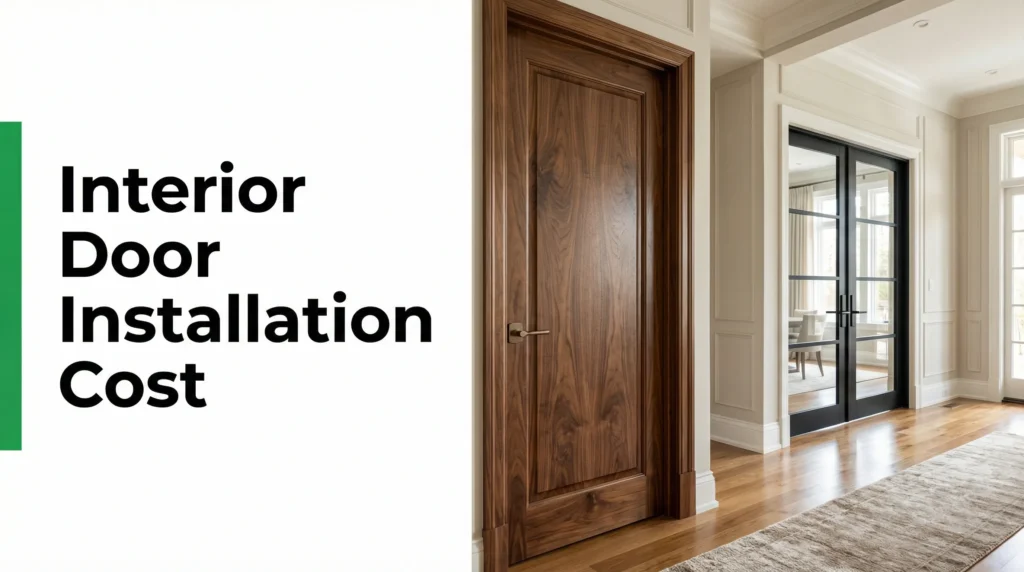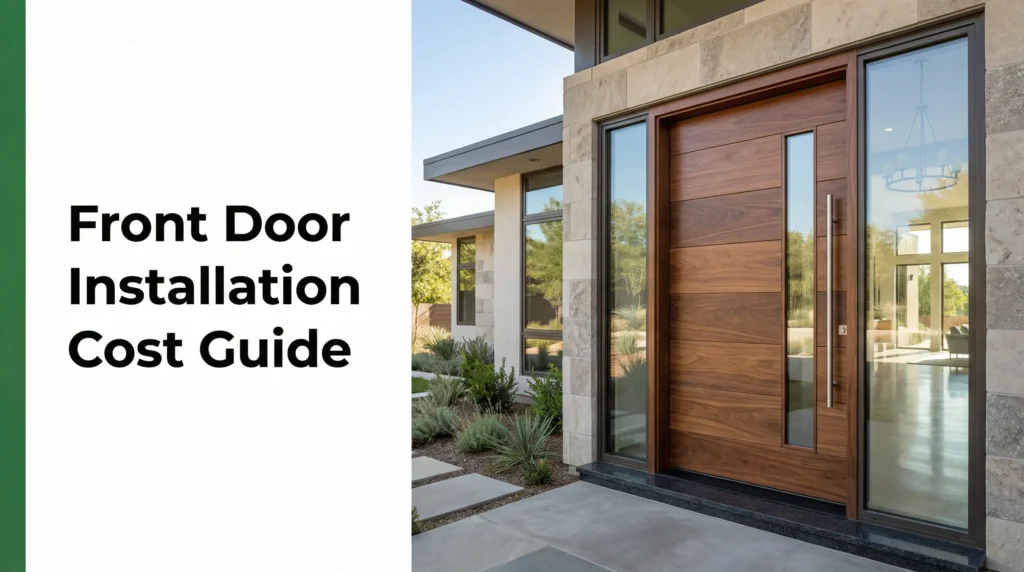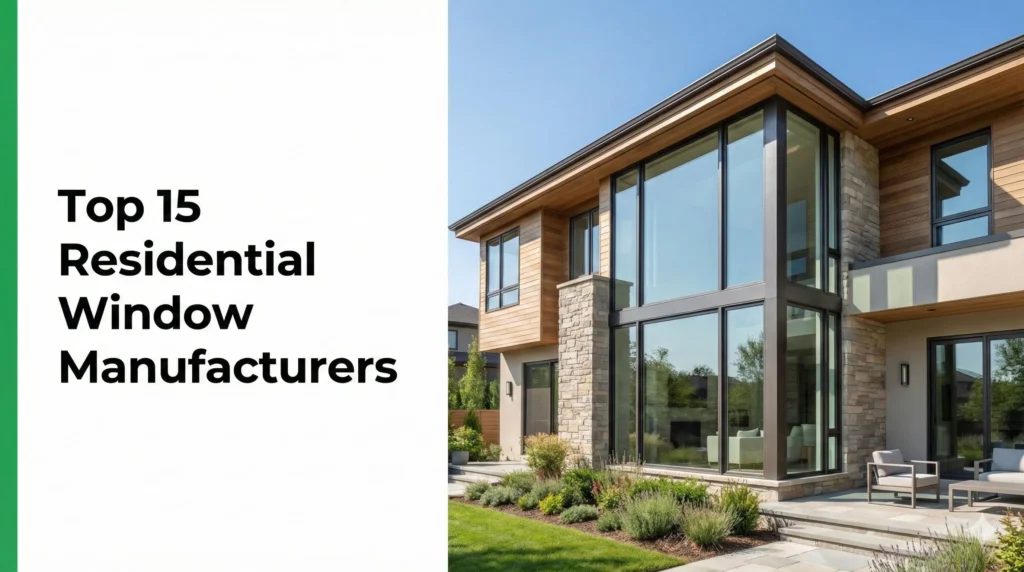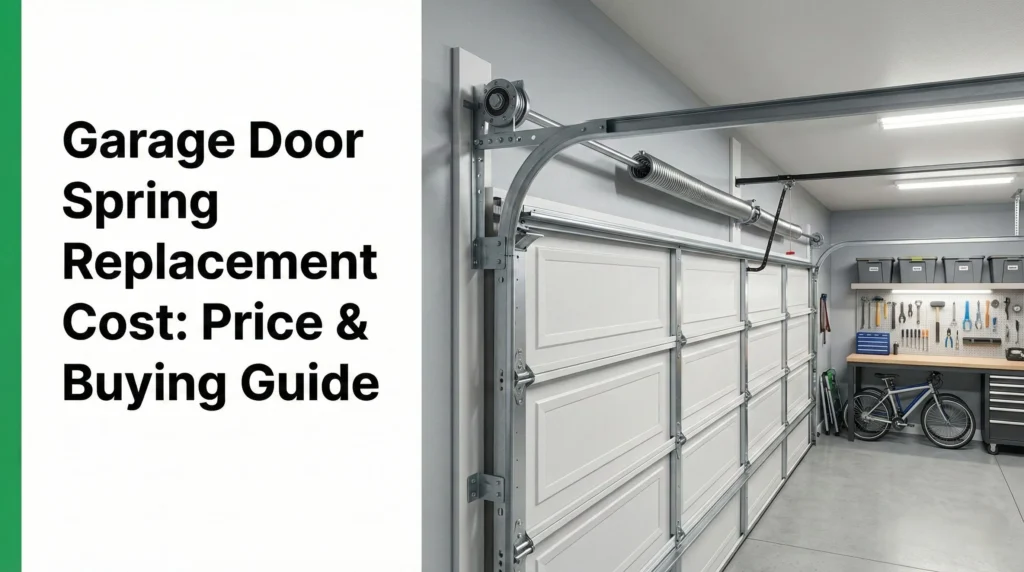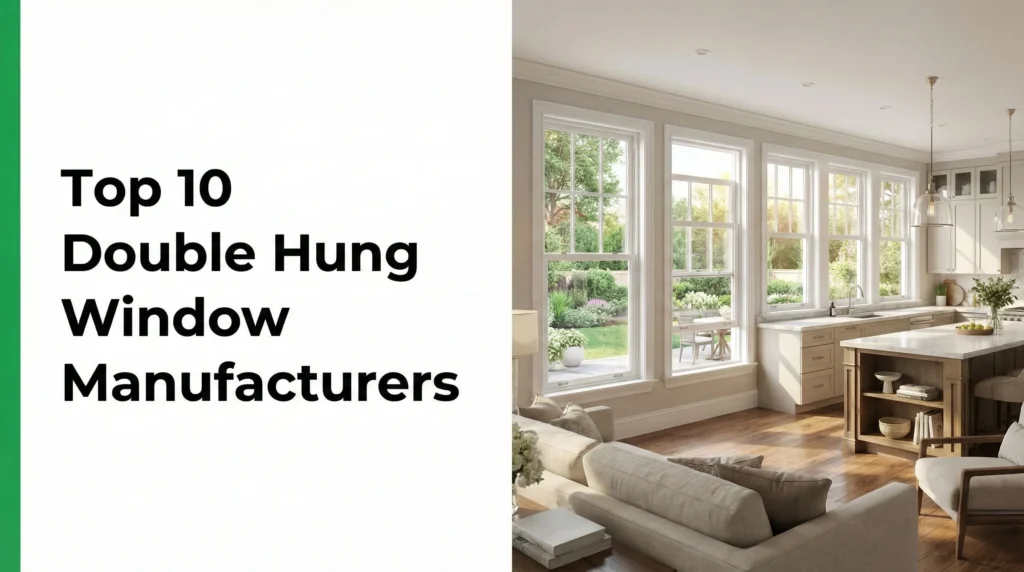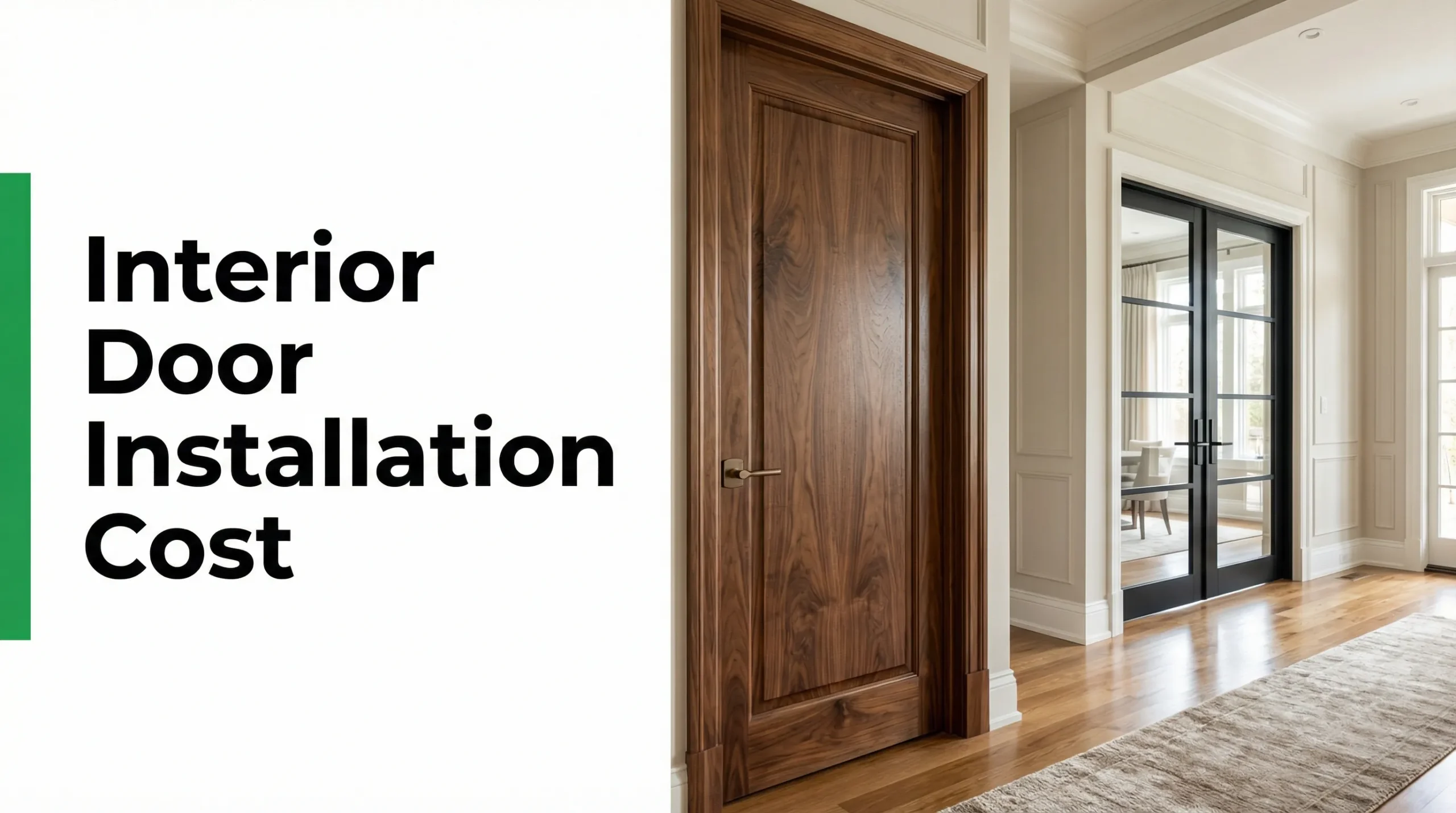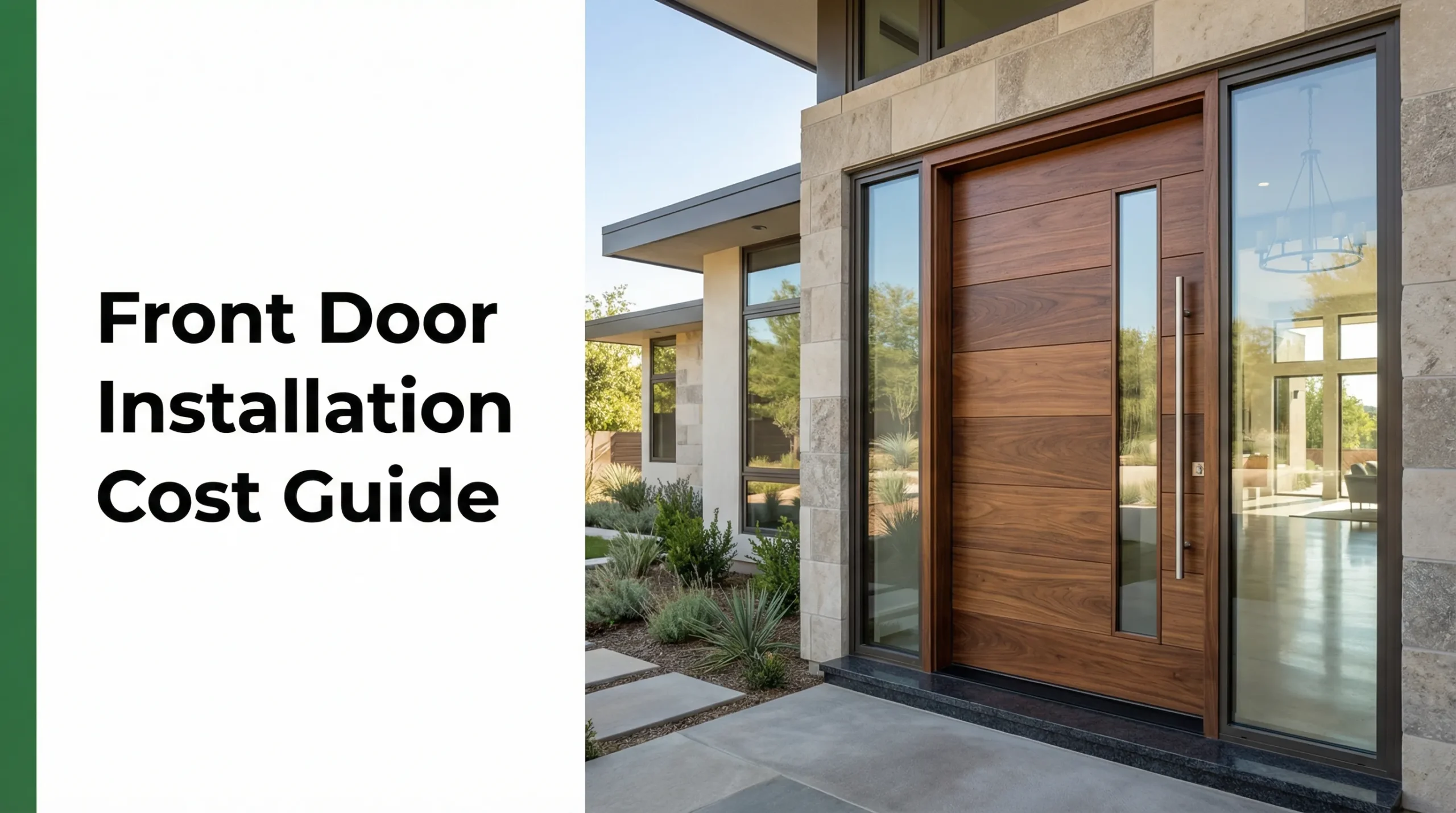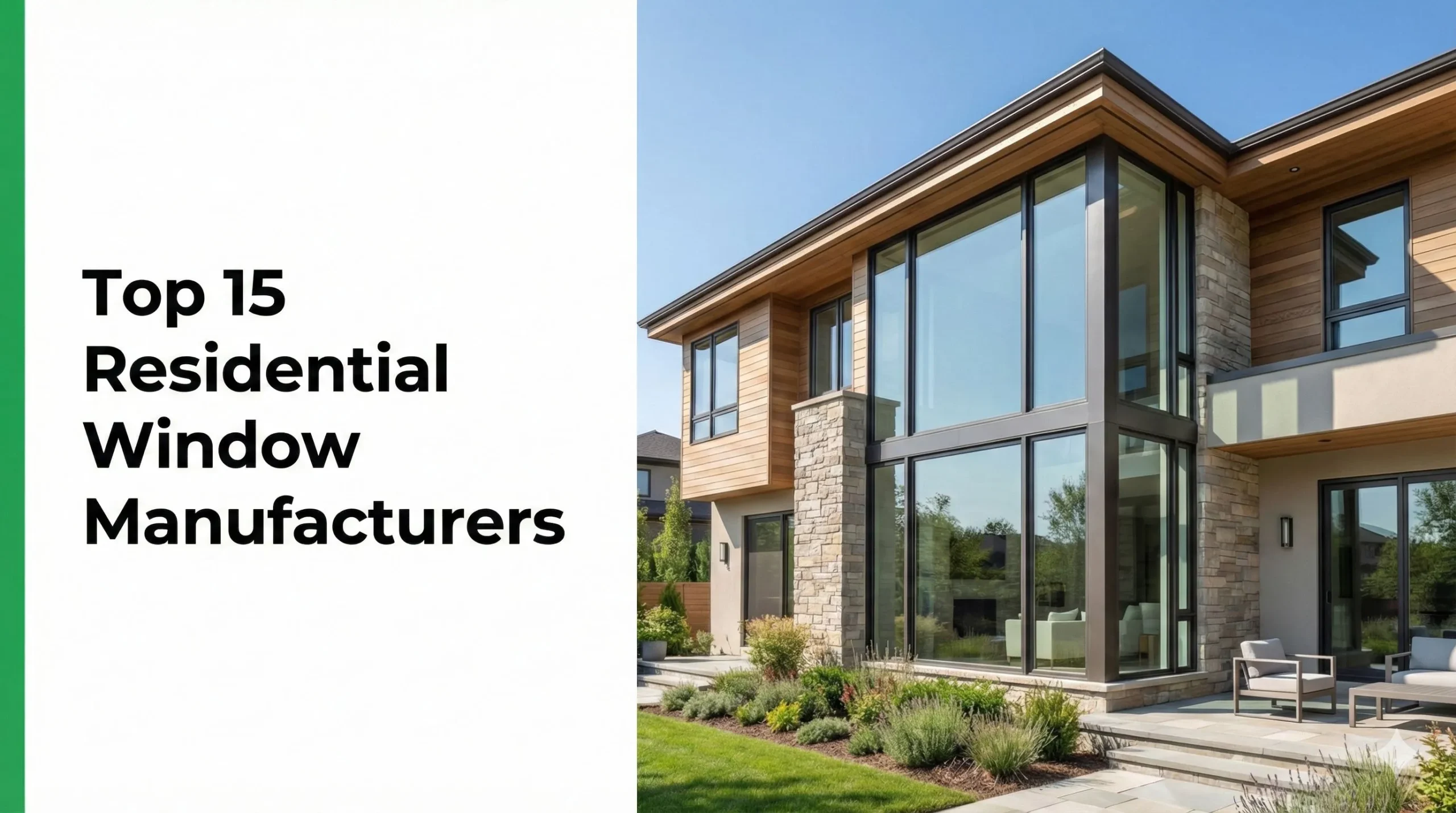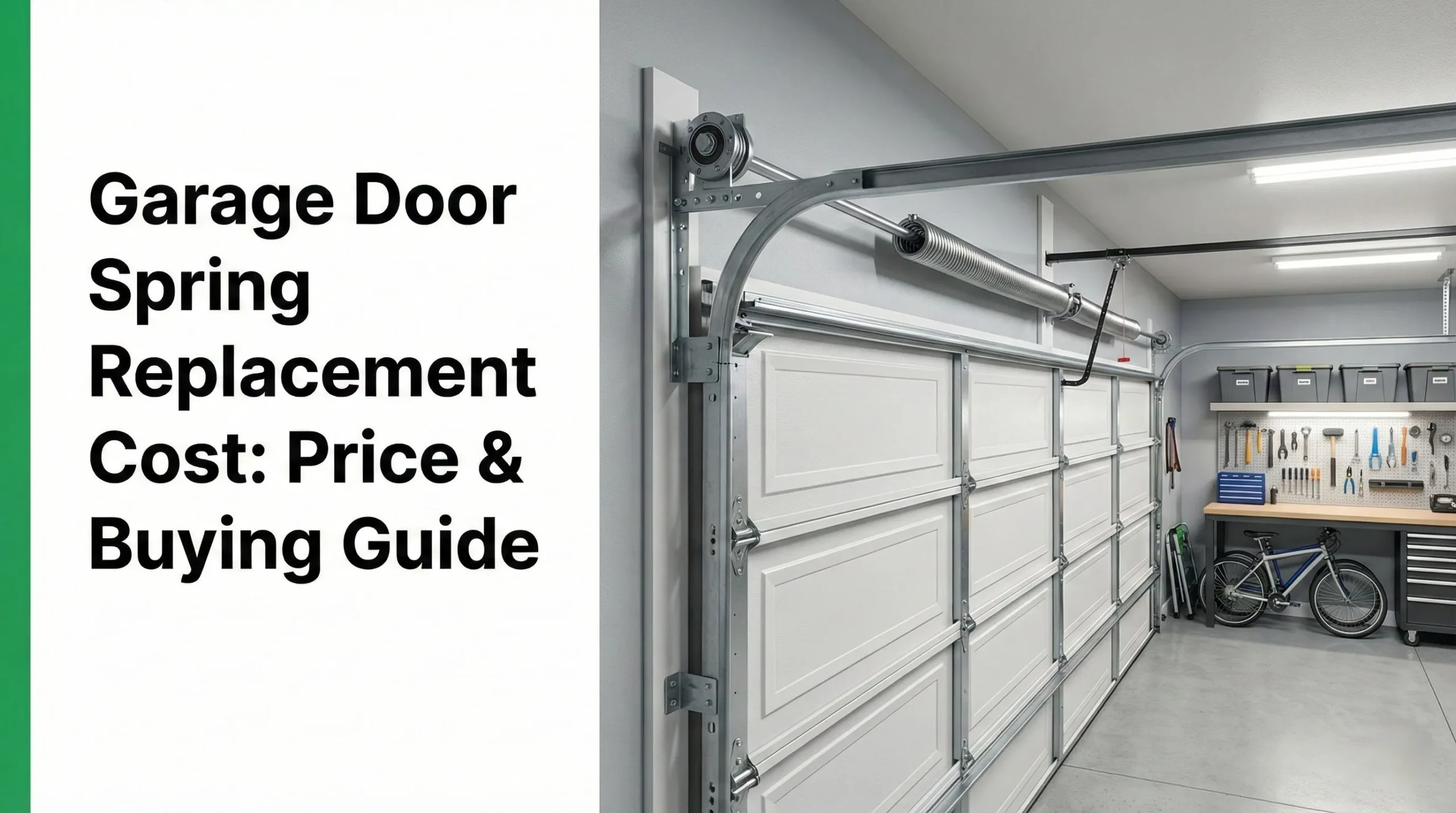Ciao! Stai pensando di cambiare le porte interne o di pianificare una ristrutturazione? Fantastico! Scegliere le porte giuste potrebbe sembrare un dettaglio insignificante, ma credimi, fa la differenza. Enorme differenza. Ottenere la giusta dimensione influisce sulla facilità con cui ti muovi in casa, sull'aspetto e sulle sensazioni che trasmettono le tue stanze e persino su quanto costi del progetto.
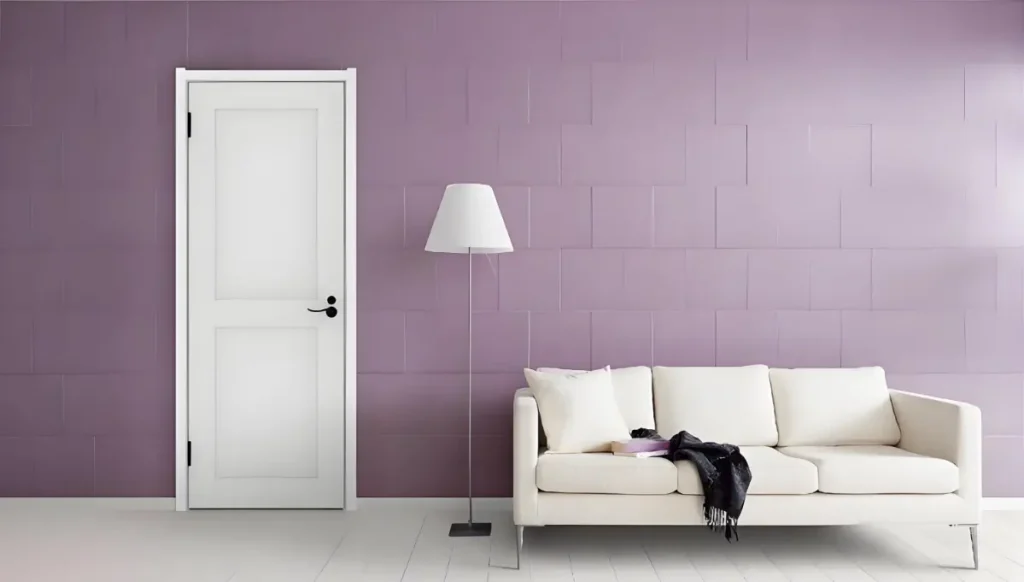
Vi è mai capitato di entrare in una stanza e di sentire che la porta era un po' troppo stretta? O magari di vedere una porta stranamente alta o bassa per lo spazio? Questi piccoli dettagli possono rovinare l'atmosfera! Molti proprietari di casa commettono errori di dimensionamento, con conseguenti costi aggiuntivi, fastidiosi problemi di installazione o porte che semplicemente non funzionano bene.
Ma non preoccuparti! Questa guida è qui per essere il tuo prezioso aiuto. Ti spiegheremo passo dopo passo tutto ciò che devi sapere sulle dimensioni standard delle porte interne. Analizzeremo il gergo tecnico, esploreremo le diverse tipologie e ti forniremo consigli pratici per misurare e scegliere le porte perfette per te. tuo Casa. Pronti a diventare esperti di dimensioni porte? Iniziamo!
A volte bastano i numeri, subito. Ecco una breve panoramica delle dimensioni standard più comuni per le porte interne negli Stati Uniti:
Tabella di riferimento rapido: dimensioni standard comuni delle porte interne
| Caratteristica | Standard statunitense/imperiale | Equivalente metrico (circa) | Appunti |
|---|---|---|---|
| Altezza | 80 pollici (6′ 8″) | 2032 millimetri | Di gran lunga lo standard più diffuso. |
| 84 pollici (7′ 0″) | 2134 millimetri | Sempre più diffuso nelle case moderne. | |
| 96 pollici (8′ 0″) | 2438 millimetri | Spesso utilizzato per soffitti alti, per un'atmosfera lussuosa. | |
| Larghezza | 24 pollici | 610 millimetri | Armadi, piccoli vani di servizio. |
| 28 pollici | 711 millimetri | Bagni, a volte piccole camere da letto. | |
| 30 pollici | 762 millimetri | Camere da letto, porte di passaggio comuni. | |
| 32 pollici | 813 millimetri | Passaggio comune, soddisfa i requisiti di accessibilità di base. | |
| 34 pollici | 864 millimetri | Porte di passaggio più larghe. | |
| 36 pollici | 914 millimetri | Porte di passaggio principali, spesso ingresso obbligatorio. | |
| Spessore | 1 ⅜ pollici | 35 millimetri | Standard per la maggior parte delle porte interne. |
| 1 ¾ pollici | 44 millimetri | Esterno più resistente, in parte con nucleo solido. |
Ricordare: Questa è solo una rapida panoramica! Esploreremo queste dimensioni (e altre ancora!) in modo molto più dettagliato più avanti.
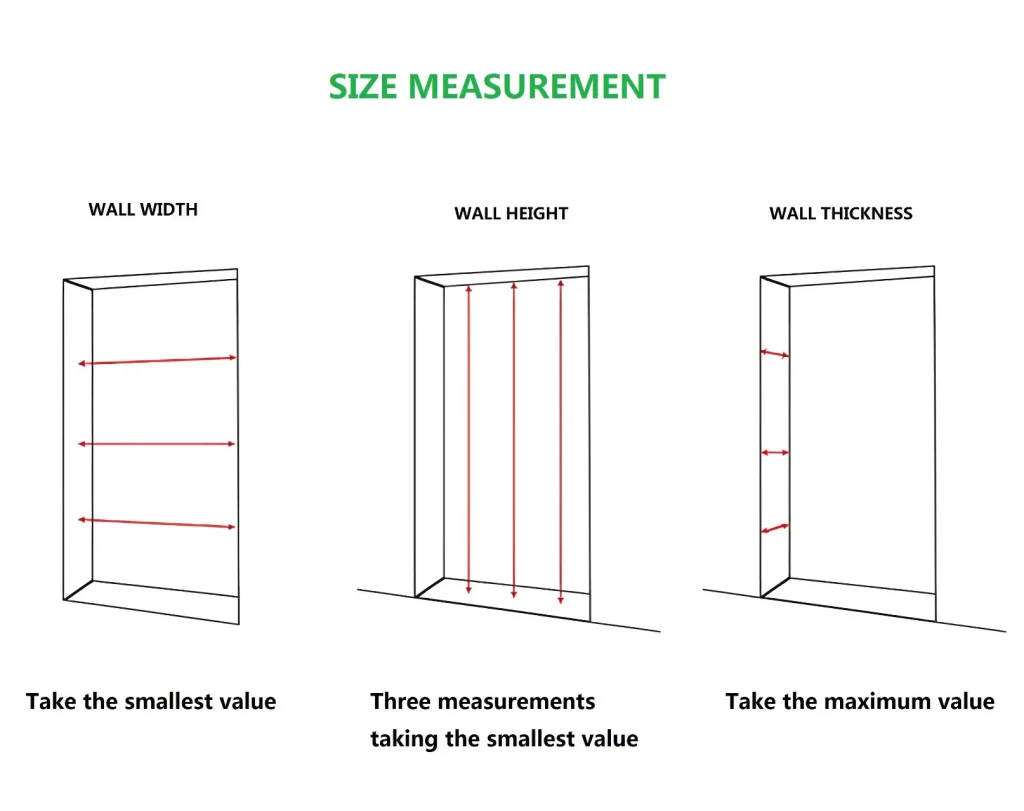
Prima di approfondire, chiariamo alcuni termini comuni che sentirete quando si parla di porte. Conoscerli renderà l'acquisto e l'installazione molto più semplici!
- Dimensioni nominali vs. reali: A volte questo crea confusione! La dimensione "nominale" è il nome o la dimensione standard che chiamiamo la porta (come "porta da 30 pollici"). La dimensione "effettiva" è la misura precisa della soletta della porta stessa, che spesso è leggermente più piccola (forse da 3 a 1,25 cm in meno in larghezza e altezza) per consentire lo spazio e il corretto inserimento all'interno del telaio. Pensatela come un pezzo di legno "2x4": il suo nome nominale non è il suo attuale dimensioni misurate (che si avvicinano a 3,8 cm x 8,9 cm). Verifica sempre se stai guardando dimensioni nominali o reali!
- Notazione del settore: Potresti vedere le dimensioni scritte come "2/6 x 6/8". Questa è una stenografia! Il primo numero indica la larghezza in piedi/pollici (2/6 = 2 piedi, 6 pollici = 30 pollici). Il secondo indica l'altezza in piedi/pollici (6/8 = 6 piedi, 8 pollici = 80 pollici). Quindi, 2/6 x 6/8 indica una porta da 30" x 80".
- Componenti chiave:
- Lastra della porta: Questa è solo la porta vera e propria, senza telaio, cerniere o ferramenta.
- Larghezza/profondità dello stipite: Lo stipite è il telaio che circonda la soletta della porta. Il suo larghezza deve corrispondere allo spessore del muro (compreso il cartongesso). profondità si riferisce allo spessore del materiale stesso dello stipite.
- Fermare: Si tratta della sottile striscia di legno all'interno del telaio della porta, contro cui la porta si appoggia quando è chiusa. Il suo posizionamento è fondamentale per una perfetta aderenza.
- Specifiche del telaio: Si riferisce all'unità completa assemblata attorno alla porta, compresi gli stipiti (parti laterali e parte superiore) ed eventualmente la soglia (anche se meno comune per le porte interne).
- Spessore standard: Come si vede dalla tabella, lo spessore più comune per le porte interne è 1 ⅜ pollici (35 mm)Questo funziona sia per le porte a nucleo cavo (più leggere, meno costose) che per molte porte a nucleo pieno (più pesanti, con un migliore isolamento acustico). Potresti scoprire 1 ¾ pollici (44 mm) spessore per applicazioni più pesanti, alcune porte tagliafuoco o talvolta come standard per le porte d'ingresso.
Bene, analizziamo più nel dettaglio queste dimensioni standard.
Altezze standard delle porte interne: raggiungere nuovi livelli
altezza standard della porta interna
- 80 pollici (6 piedi e 8 pollici o 6/8): Questo è il re! Per decenni, 80 pollici (circa 203 cm) è stata l'altezza standard per le porte interne negli Stati Uniti. Si adatta bene a soffitti alti 2,4 metri (8 piedi) ed è ampiamente disponibile e conveniente. Se state sostituendo le porte in una casa tipica costruita negli ultimi 50-60 anni, è molto probabile che siano alte 80 pollici (circa 203 cm).
- 84 pollici (7 piedi o 7/0): La loro popolarità sta aumentando! Poiché le case più recenti spesso presentano soffitti più alti (2,7 metri o più), le porte alte 2,1 metri stanno diventando sempre più comuni. Possono far sembrare una stanza più alta e spaziosa.
- 96 pollici (8 piedi o 8/0): Benvenuto, lusso! Per le case con soffitti molto alti (3 metri o più), le porte da 2,4 metri sono un elemento di grande impatto. Hanno un aspetto sontuoso e moderno, ma hanno un prezzo più elevato e richiedono una struttura specifica.
- Varianti e codici regionali: Sebbene 80" sia la norma, verificate sempre le normative edilizie locali! A volte potrebbero essere richieste altezze minime specifiche, soprattutto per motivi di accessibilità. Le case più vecchie, in particolare quelle pre-seconda guerra mondiale, potrebbero avere altezze particolari e non standard. Torneremo su come gestirle più avanti!
Larghezze standard delle porte interne: trovare la misura giusta
La larghezza è fondamentale per muoversi agevolmente tra le stanze. Ecco una panoramica delle larghezze più comuni e dove si trovano tipicamente:
Larghezze delle porte di passaggio comuni
- Larghezze delle porte di passaggio comuni:
- 24 pollici (2/0): Di solito riservato a cabine armadio, piccoli bagni di servizio o armadi per la biancheria. Può risultare piuttosto stretto per un passaggio regolare. Considera se un dimensione della porta della dispensa deve contenere oggetti più grandi.
- 28 pollici (2/4): Spesso utilizzato per bagni o camere da letto più piccole dove lo spazio è limitato. È accettabile, ma può essere difficile spostare i mobili.
- 30 pollici (2/6): Una larghezza molto comune per camere da letto e altri ambienti. Offre un passaggio comodo per la maggior parte delle persone.
- 32 pollici (2/8): Un'altra scelta popolare, soprattutto per i passaggi principali. È importante sottolineare che questa larghezza (in abbinamento a cerniere standard) di solito fornisce l'apertura minima richiesta dalle linee guida ADA per l'accessibilità (ne parleremo più avanti!).
- 34 pollici (2/10): Meno comune di 32" o 36", ma offre una sensazione leggermente più ampia e generosa.
- 36 pollici (3/0): Spesso utilizzata per corridoi principali, ingressi di garage o ovunque sia necessario spostare mobili di grandi dimensioni o si desideri una sensazione di maggiore spazio. Questa è generalmente considerata una larghezza molto comoda.
- Considerazioni specifiche sulla stanza: Pensa a come usi la stanza. Una camera da letto deve poterci passare i mobili. Un corridoio principale è molto frequentato. Un piccolo armadio per la biancheria potrebbe richiedere solo un'anta da 60 cm. Pianificare in anticipo evita mal di testa!
- Requisiti minimi del codice edilizio: Le normative spesso specificano le larghezze minime, soprattutto per le vie di uscita e l'accessibilità. Ad esempio, almeno una porta d'ingresso principale di un'abitazione deve essere larga 36 pollici. Verificate sempre i requisiti locali! Considerando l'intera gamma di Dimensioni standard delle porte aiuta a garantire conformità e funzionalità.
Spessore standard delle porte interne: nucleo cavo vs. pieno
Spessore standard della porta interna
Ne abbiamo già parlato, ma torniamo brevemente:
- 1 ⅜ pollici (35 mm): Lo standard di riferimento per la maggior parte delle applicazioni per interni. È compatibile con ferramenta e stipiti standard. Troverai entrambi:
- Porte alveolari: Più leggeri, meno costosi, realizzati con una struttura interna a nido d'ape o con una struttura minima ricoperta da un rivestimento (impiallacciatura di legno, MDF, ecc.). Offrono un isolamento acustico minimo.
- Porte con anima piena: Più pesanti, più densi, spesso riempiti con truciolato o legno ingegnerizzato. Offrono un isolamento acustico molto migliore e hanno una consistenza più consistente. Di solito hanno uno spessore di 3,5 cm.
- 1 ¾ pollici (44 mm): Meno comune in casa ma utilizzato per:
- Porte che necessitano di maggiore resistenza o sicurezza (come ad esempio la porta di un'officina).
- Alcune porte tagliafuoco.
- Occasionalmente utilizzato per porte in legno massello di alta qualità, molto pesanti.
- Spesso lo spessore standard per le porte esterne, come la tua dimensioni standard della porta d'ingresso.
Adattamento alle pareti: standard di larghezza degli stipiti delle porte
Lo stipite della porta deve adattarsi perfettamente allo spessore del muro.
- 4 ⅝ pollici (a volte indicato come 4 9/16″): Questa è la larghezza standard dello stipite per le pareti costruite con 2×4 perni più cartongesso standard da ½ pollice su ogni lato (montante da 3,5" + cartongesso da 0,5" + cartongesso da 0,5" ≈ 4,5", con un piccolo margine di manovra). Questa è la costruzione di pareti interne più comune negli Stati Uniti.
- 6 ⅝ pollici (a volte indicato come 6 9/16″): Questo viene utilizzato per muri costruiti con 2×6 perni più cartongesso standard. Queste pareti più spesse sono spesso utilizzate per le pareti esterne o talvolta per le pareti interne contenenti impianti idraulici.
- Opzioni personalizzate: Se hai pareti con spessori non standard (ad esempio pareti in gesso in case più vecchie o pareti con strati aggiuntivi), potresti aver bisogno di larghezze di stipiti personalizzate o di estensioni degli stipiti.
Tipi di porte interne e relative dimensioni
Le porte interne non sono semplici porte a battente! Diverse tipologie soddisfano esigenze diverse e sono disponibili in dimensioni standard.
- Porte di passaggio a cerniera: La classica porta a battente.
- Separare: Il tipo più comune, disponibile in tutte le larghezze e altezze standard sopra menzionate.
- Doppia (porte francesi): Due porte che si incontrano al centro. Spesso utilizzate per aperture più ampie in sale da pranzo, uffici o suite padronali. Abbinamenti comuni prevedono due porte da 61 cm, 76 cm o 81 cm per riempire un'apertura di 1,2, 1,5 o 1,8 metri. Esplora diverse soluzioni. Dimensioni delle portefinestre e tabella delle misure opzioni. Per aperture più grandi, considerare le possibilità per il portafinestra di dimensioni più grandi combinazioni. Possono anche portare all'esterno, sovrapponendosi con dimensioni standard della portafinestra concetti.
- Porte a scomparsa: Queste diapositive in la parete, risparmiando spazio sul pavimento. Perfette per bagni o ripostigli dove una porta a battente sarebbe scomoda. Utilizzano dimensioni standard per le porte (ad esempio, 76,2x203 cm), ma richiedono una cavità nel muro di circa il doppio della larghezza della porta per ospitare il binario e la porta quando è aperta. L'installazione è più complessa rispetto a una porta a battente standard.
- Porte pieghevoli: Spesso utilizzato per armadi o lavanderie. Due o più pannelli sono incernierati insieme e si ripiegano all'apertura.
- Le larghezze più comuni includono 24", 30", 36", 48", 60" e 72". Ogni larghezza è solitamente composta da due o quattro pannelli. Consulta le specifiche dimensioni della porta a soffietto opzioni. Sono ottime soluzioni salvaspazio!
- Porte scorrevoli: Questi scorrono lungo una guida parallela al muro.
- Porte del fienile: Moderne e alla moda, rustiche (o moderne!), le porte da fienile sono appese a un binario a vista sopra l'apertura. Hanno bisogno di spazio libero sulla parete accanto all'apertura per consentire alla porta di scorrere. Vengono utilizzate le dimensioni standard delle lastre delle porte, ma assicuratevi che la porta sia leggermente più larga e alta dell'apertura stessa per coprirla completamente. Vedi le caratteristiche tipiche. dimensione della porta del fienile considerazioni.
- Porte di bypass: Due o più ante scorrono su binari paralleli, tipicamente utilizzati per armadi ampi. Un'anta scorre davanti all'altra. Spesso si applicano le larghezze standard delle ante degli armadi. Il concetto è simile ad alcuni Dimensioni delle porte scorrevoli configurazioni, usate solo internamente.
- Porte scorrevoli generali: Simili alle portefinestre, ma per uso interno, magari per separare stanze grandi. Considerare le distanze necessarie. A volte si sovrappongono con dimensioni standard della porta scorrevole in vetro design ma utilizzano pannelli solidi.
- Porte pieghevoli: Simile al bifold, ma spesso con più pannelli, consentendo di chiudere aperture molto ampie, come separare la zona giorno da quella pranzo. Scopri vari dimensioni delle porte pieghevoli per queste applicazioni.
Inquadratura corretta: dimensioni approssimative dell'apertura
Questo è estremamente importante per l'installazione! L'"apertura grezza" è il foro incorniciato nel muro. Prima La porta e lo stipite sono installati. Deve essere più grande dell'unità porta per lasciare spazio agli stipiti, alla spessoratura (inserimento di piccoli cunei per rendere il telaio perfettamente a piombo e in piano) e alla squadratura.
- Calcolo delle aperture grezze (la regola semplice):
- Larghezza grezza dell'apertura = Larghezza della soletta della porta + 2 pollici (Consente lo spessore dello stipite su entrambi i lati + spazio per la zeppa).
- Altezza grezza dell'apertura = Altezza della soletta della porta + 2 a 2,5 pollici (Consente lo spessore del montante della testa, lo spazio per i distanziali e lo spazio libero per il pavimento). Controllare sempre attentamente le raccomandazioni del produttore, poiché potrebbero variare leggermente!
- Tabella delle dimensioni di apertura approssimativa (esempi comuni): Dimensioni nominali della porta (L x A) Apertura grezza tipica (L x A) 24″ x 80″ 26″ x 82″ – 82.5″ 28″ x 80″ 30″ x 82″ – 82.5″ 30″ x 80″ 32″ x 82″ – 82.5″ 32″ x 80″ 34″ x 82″ – 82.5″ 36″ x 80″ 38″ x 82″ – 82.5″ 30″ x 84″ 32″ x 86″ – 86.5″ 36″ x 96″ 38″ x 98″ – 98,5″
- Specifiche di inquadratura e intestazioni: Sopra l'apertura della porta, è necessaria una "trave di testa". Si tratta di una trave strutturale orizzontale che sostiene il peso della parete sovrastante (montanti, ecc.) sopra l'apertura.
- Pareti portanti: Se il muro sostiene il peso del tetto o del pavimento sovrastante, la trave di sostegno deve essere opportunamente dimensionata secondo le norme per sopportare tale carico (spesso realizzata con legname doppio o travi ingegnerizzate).
- Pareti non portanti: Se il muro separa solo le stanze, il requisito della trave è molto più semplice (spesso basta un semplice listello piatto 5x10 cm). Sbagliare può causare problemi strutturali!
Aprire le porte a tutti: accessibilità e design universale
Rendere le case accessibili a persone di tutte le età e abilità è sempre più importante. Le dimensioni delle porte sono fondamentali!
- Requisiti ADA (Americans with Disabilities Act): Sebbene si riferiscano principalmente agli spazi pubblici, le linee guida ADA vengono spesso adottate o citate anche per le case accessibili. Il requisito fondamentale è un minimo Larghezza libera di 32 pollici quando la porta è aperta a 90 gradi. Questa non è la larghezza della soletta della porta! Una porta da 36 pollici di solito la fornisce, mentre una porta da 34 pollici potrebbe Appena soddisfarlo a seconda del tipo di cerniera e del posizionamento del fermo. Una porta da 32 pollici in genere lo fa non fornire 32 pollici di passaggio libero.
- Autorizzazioni di manovra: L'ADA specifica anche lo spazio libero necessario in giro la porta (sia sul lato a spinta che su quello a tiro) per consentire agli utenti su sedia a rotelle di avvicinarsi e aprire la porta.
- Hardware: Le maniglie a leva sono preferibili alle manopole rotonde perché sono più facili da usare, senza stringere troppo o torcere.
- Progettazione universale: Questo concetto più ampio mira a creare case adatte a tutti, indipendentemente dall'età o dalle capacità. Questo include porte più larghe (spesso consigliate 91 cm), maniglie a leva e la progettazione di soglie e transizioni tra le stanze. Si tratta di rendere la casa a prova di futuro per te stesso, per le visite dei familiari o per un potenziale valore di rivendita.
Porte in tutto il mondo: standard dimensionali internazionali
Anche se ci siamo concentrati sugli Stati Uniti, le dimensioni delle porte variano a livello globale!
- Nord America vs. Europa: Gli Stati Uniti e il Canada utilizzano principalmente il sistema di misura imperiale (pollici, piedi) e gli standard di cui abbiamo parlato (80″ di altezza). L'Europa utilizza principalmente il sistema metrico (millimetri, metri).
- Misure europee comuni: Le altezze standard variano spesso da 1950 mm a 2150 mm. Le larghezze includono comunemente 600 mm, 700 mm, 800 mm e 900 mm. Lo spessore delle porte può essere di circa 40 mm.
- Taglie UK: Il Regno Unito fonde la storia imperiale con l'adozione del sistema metrico. Si possono trovare altezze come 1981 mm (circa 2 metri e 6 pollici) e larghezze come 762 mm (circa 76 cm o 76 cm).
- Altre regioni (Asia, Australia, Medio Oriente): Gli standard variano notevolmente in base alle pratiche edilizie locali, alla storia e all'influenza del sistema metrico/imperiale. In Australia, ad esempio, si usano comunemente altezze come 2040 mm e larghezze come 820 mm.
- Conversione metrica: Ricorda, 1 pollice equivale a 25,4 millimetri. Una rapida tabella di conversione è utile per il confronto.
La storia delle dimensioni delle porte
Ti sei mai chiesto perché le nostre porte hanno queste dimensioni?
- Prima della guerra vs. dopo la guerra: Le case più vecchie (pre-anni '40) presentano spesso una maggiore variabilità. Si possono trovare porte più corte e strette, o a volte sorprendentemente alte, che riflettono diversi metodi di costruzione e stili architettonici. Il boom edilizio del dopoguerra ha portato a una maggiore standardizzazione per la produzione di massa, consolidando altezze come 203 cm.
- Modifica dell'altezza umana: Poiché l'altezza media degli esseri umani è aumentata nel corso dei secoli, anche l'altezza delle porte ha generalmente seguito l'esempio, anche se spesso è rimasta indietro!
- Stili regionali: Diversi movimenti architettonici enfatizzavano proporzioni diverse. Un bungalow in stile Craftsman potrebbe avere un'estetica delle porte diversa da quella di un ranch in stile Mid-Century Modern.
Tendenze moderne per le dimensioni delle porte
Il design della casa è in continua evoluzione!
- Taller è in: Come accennato, le porte da 2,1 m (7 piedi) e 2,4 m (8 piedi) sono sempre più popolari, soprattutto con soffitti alti. Creano un senso di apertura e lusso.
- Passaggi più ampi: Anche per le stanze standard si sta orientando verso porte più larghe (32″ o 36″), migliorando la circolazione e l'accessibilità.
- Minimalista e a tutta altezza: I design eleganti e minimalisti sono popolari. Tra questi, le porte a tutta altezza che vanno quasi dal pavimento al soffitto, spesso con cerniere e telai a scomparsa per un aspetto uniforme.
- Disegni a filo: Le porte semplici e dalla superficie piana (porte a filo) continuano ad essere molto apprezzate negli stili moderni e contemporanei.
Come misurare correttamente le porte interne
Misurazioni precise sono FONDAMENTALI! Non tirare a indovinare! Ecco come fare:
Guida passo passo:
- Misurare la soletta della porta esistente (in caso di sostituzione):
- Larghezza: Misurare il attuale Larghezza della porta in tre punti: superiore, centrale e inferiore. Utilizzare la misura PIÙ LARGHE.
- Altezza: Misurare il attuale altezza sia a sinistra che a destra. Utilizzare la misura PIÙ ALTA.
- Spessore: Misurare il bordo della porta per calcolarne lo spessore (solitamente 1 ⅜” o 1 ¾”).
- Misurare l'apertura della porta (in assenza di porta o per unità pre-appese):
- Larghezza (da stipite a stipite interno): Misurare la distanza tra i montanti laterali in alto, al centro e in basso. Utilizzare la misura PIÙ STRETTA.
- Altezza (dallo stipite della testa al pavimento): Misurare dalla parte inferiore dello stipite della testa fino al pavimento finito (inclusi tappeti, piastrelle, ecc.). Misurare sia sul lato sinistro che su quello destro. Utilizzare la misura PIÙ CORTA.
- Spessore della parete (larghezza dello stipite): Misura lo spessore totale del muro (montante + cartongesso su entrambi i lati). Questo determina la larghezza dello stipite necessaria (ad esempio, 10,5 cm per un muro di 5x10 cm).
- Controlla se è quadrato: Utilizzare una livella per assicurarsi che il telaio esistente sia a piombo (in verticale) e che la traversa sia a livello (in orizzontale). Utilizzare un metro a nastro per verificare le misure diagonali dell'apertura: se sono uguali, l'apertura è perpendicolare. In caso contrario, potrebbero essere necessarie delle regolazioni durante l'installazione.
Errori comuni da evitare:
- ❌ Misurazione del ordinare (rivestimento) attorno alla porta, non la porta o l'apertura stessa.
- ❌ Dimenticare di tenere conto del pavimento finito altezza. Misurare la superficie effettiva su cui si aprirà la porta.
- ❌ Misurare una sola volta. Misurare sempre larghezza e altezza in più punti!
- ❌ Presumere che un'apertura sia squadrata o a piombo senza verificarla.
- ❌ Non considerare lo spazio di apertura: assicurati che la porta abbia spazio sufficiente per aprirsi completamente senza urtare mobili o pareti.
Oltre le basi: applicazioni specializzate per porte interne
A volte è necessario che una porta faccia più che aprirsi e chiudersi.
- Insonorizzazione: Vuoi pace e tranquillità? Scegli un nucleo solido Porta invece di una struttura tamburata. Assicuratevi che aderisca perfettamente al telaio e valutate l'aggiunta di guarnizioni o guarnizioni lungo i bordi e di una guarnizione nella parte inferiore per bloccare la trasmissione del suono. Spessore (4,5 cm potenzialmente migliore) e peso sono fattori determinanti.
- Porte tagliafuoco: Richieste dal codice in determinate aree, più comunemente tra un garage annesso e l'area abitativa. Queste porte sono costruite per resistere al fuoco per un periodo di tempo specifico (ad esempio, 20 minuti). In genere hanno un'etichettatura specifica, sono spesso a nucleo pieno o in metallo e di solito richiedono guarnizioni speciali e cerniere autochiudenti. Sono disponibili dimensioni standard, ma è opportuno verificare i requisiti delle normative locali. A volte, la porta che conduce al garage deve soddisfare requisiti specifici. dimensioni della porta del garage adiacenze del codice. Potrebbe anche avere un secondario dimensioni della porta antitempesta se funge parzialmente da uscita esterna.
- Efficienza energetica: Meno importante per le porte interne rispetto a quelle esterne, ma se si sta cercando di suddividere il riscaldamento/raffreddamento in zone, una porta con nucleo solido e una buona tenuta (guarnizione anti-intemperie) può aiutare a prevenire correnti d'aria tra aree con temperature diverse.
Come gestire situazioni con porte non standard
Lavorare con case vecchie o con layout insoliti spesso significa dover ricorrere ad aperture non standard. Niente panico!
- Case più vecchie: Le porte potrebbero essere più strette o più corte rispetto agli standard odierni.
- Opzione 1: Porta personalizzata: Spesso puoi porte interne personalizzate di qualsiasi dimensione da noi per adattarsi perfettamente all'apertura esistente. In questo modo si preserva il telaio originale.
- Opzione 2: Modifica apertura: Se possibile e desiderato, è possibile rimodellare l'apertura per adattarla a una porta di dimensioni standard. Questo richiede più lavoro, ma offre più opzioni di porte standard.
- Altezze insolite: Se un'apertura è troppo alta per una porta standard, a volte un finestra a traversa (Un piccolo pannello finestrato sopra la porta) può riempire lo spazio con eleganza. In alternativa, sono disponibili porte personalizzate più alte.
- Passaggi stretti: Se una porta a battente standard non funziona, prendi in considerazione alternative salvaspazio come porte a scomparsa, porte a battente, porte pieghevoli o dimensioni delle porte pieghevoli.
Fare la scelta: guida alla selezione delle dimensioni delle porte
Ti senti sopraffatto? Semplifichiamo la decisione.
- Scegli per stanza:
- Camere da letto: La larghezza è comoda: 30" o 32". L'altezza standard è 80".
- Bagni: Spesso si usano 28" o 30", a seconda della disposizione. Considerare le esigenze di privacy (nucleo solido).
- Armadi: Da 60 a 76 cm, dimensioni comuni per le porte a battente. Porte a soffietto o bypass per armadi più ampi. Una cabina armadio potrebbe utilizzare una porta di passaggio di dimensioni standard.
- Passaggi/Voci principali: Si consiglia una larghezza di 32" o 36" per facilitare gli spostamenti e i mobili.
- A prova di futuro: Pensa a lungo termine. Porte più larghe (minimo 81 cm, ideale 91 cm) migliorano l'accessibilità per passeggini, sedie a rotelle o per esigenze di mobilità future. Scegliere dimensioni standard generalmente rende le sostituzioni future più facili ed economiche.
- Considerazioni sul budget:
- Dimensioni standard = costo inferiore: Le misure più convenienti e ampiamente disponibili sono 80″ di altezza e larghezze comuni (30″, 32″) in spessori standard (1 ⅜”).
- Personalizzato = Costo più elevato: Dimensioni non standard, porte più alte (213 cm, 243 cm), porte più spesse (4,5 cm) e tipologie speciali (porte a scomparsa, porte finestre personalizzate) saranno più costose. Il pannello pieno è più costoso del pannello alveolare.
Panoramica delle linee guida per l'installazione
Installare una porta interna, soprattutto se pre-montata (porta già montata sul telaio), può essere un progetto fai da te se si è pratici. L'installazione su solaio è più complicata.
- Strumenti e materiali di cui potresti aver bisogno: Nastro di misurazione, livella (meglio 120 o 180 cm), spessori (in legno o materiale composito), martello, chiodi o viti, taglierino, occhiali di sicurezza, eventualmente un piede di porco, trapano, set di cacciaviti.
- Fai da te vs. professionale:
- Adatto al fai da te: Sostituzione di un'unità pre-appesa esistente con una delle stesse dimensioni, installazione di semplici porte incernierate in un'apertura ben preparata.
- Chiama un professionista quando: Installazione di una soletta per porta in uno stipite esistente (richiede una precisa incastro per cerniere/fermo), intelaiatura o modifica di aperture grezze, installazione di porte a scomparsa, gestione di aperture molto fuori squadra o se si desidera semplicemente un risultato perfetto e senza problemi.
- Panoramica passo passo (unità pre-appesa):
- Preparazione all'apertura: Assicurarsi che l'apertura grezza abbia le dimensioni corrette, sia pulita e che l'intelaiatura sia solida.
- Unità di misura: Sollevare l'unità pre-appesa nell'apertura.
- Spessore e livellamento (prima il lato cerniera): Partendo dal lato cerniera, utilizzare degli spessori tra lo stipite e i perni di apertura grezzi per ottenere lo stipite perfettamente a piombo (in verticale). Fissarlo in posizione senza stringere troppo.
- Spessore e livello (lato fermo e superiore): Spessorare il montante laterale del chiavistello, assicurandosi che ci sia una distanza costante (rivetto) tra il bordo della porta e il montante. Spessorare il montante superiore per assicurarne il livellamento.
- Telaio sicuro: Una volta che sono a piombo, livellati e squadrati con le apposite spallette, inchiodare o avvitare saldamente gli stipiti attraverso i distanziali nei montanti dell'intelaiatura.
- Installa Trim: Installare la cornice (modanatura di finitura) attorno al telaio della porta per coprire lo spazio tra lo stipite e il muro a secco.
- Installare l'hardware: Installare la maniglia/leva della porta e la piastra di battuta.
Domande frequenti sulle dimensioni delle porte interne
Qual è la dimensione più standard per le porte interne?
Quanto dovrebbe essere più grande l'apertura grezza rispetto alla porta?
Posso installare una porta da 32 pollici in un'apertura da 30 pollici?
Ho bisogno di una porta con anima piena?
Qual è la differenza tra una porta pre-appesa e una porta a battente?
Come posso prendere le misure per una porta sostitutiva?
Qual è la larghezza minima della porta di una camera da letto?
Le porte da 7 piedi (84 pollici) stanno diventando lo standard?
Posso rifinire una porta standard per adattarla a un'apertura più piccola?
Porte a nucleo cavo hanno una struttura interna in legno massello minima, quindi le rifiniture sono molto limitate (spesso solo circa ¼ di pollice) prima di colpire la parte cava. Controllare sempre la guida del produttore.
Quali dimensioni di porta sono necessarie per l'accesso delle sedie a rotelle?
Uffa! Abbiamo già parlato molto delle porte interne, vero? Dalla comprensione delle dimensioni standard come 200 cm di altezza e larghezze comuni come 76 o 81 cm, alla decodificazione di termini tecnici come "nominale" e "reale", fino all'esplorazione di diverse tipologie come porte a scomparsa, a libro e a battente, ora hai a disposizione conoscenze preziose!
Punti chiave:
- Misurare attentamente: Le misure precise (larghezza, altezza, spessore, larghezza dello stipite) non sono negoziabili! Misurate più punti.
- Conoscere gli standard: L'altezza di 80 pollici è fondamentale, ma esistono opzioni più alte. Le larghezze comuni servono a diverse funzioni della stanza. Lo spessore tipico è di 1 ⅜ pollice.
- L'apertura approssimativa è la chiave: Deve essere più grande dell'unità porta (solitamente +2" di larghezza, +2" a 2,5" di altezza).
- Considera tipo e funzione: Scegli il tipo di porta (a cerniera, scorrevole, pieghevole) e il nucleo (cavo/pieno) più adatti alle esigenze della stanza e alle tue preferenze (rumore, budget).
- Pensa al futuro: Quando si selezionano le larghezze, tenere conto dell'accessibilità e delle esigenze future.
La scelta delle porte interne giuste è il risultato della comprensione degli standard tecnici e della considerazione dello stile e delle esigenze uniche della vostra casa. Prestando attenzione alle dimensioni e progettando con cura, potete garantire che le vostre porte siano belle, funzionino perfettamente e valorizzino il vostro spazio abitativo per gli anni a venire.
E ricorda, se hai bisogno di una dimensione specifica che è difficile da trovare, puoi sempre esplorare le opzioni per ordina la porta interna da noi.
In bocca al lupo per il tuo progetto! Ce la farai!
